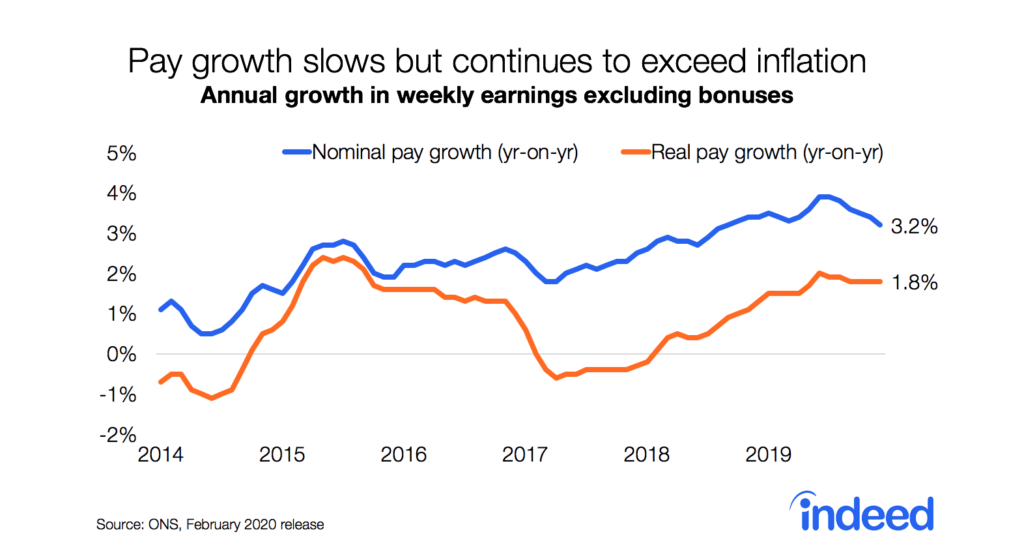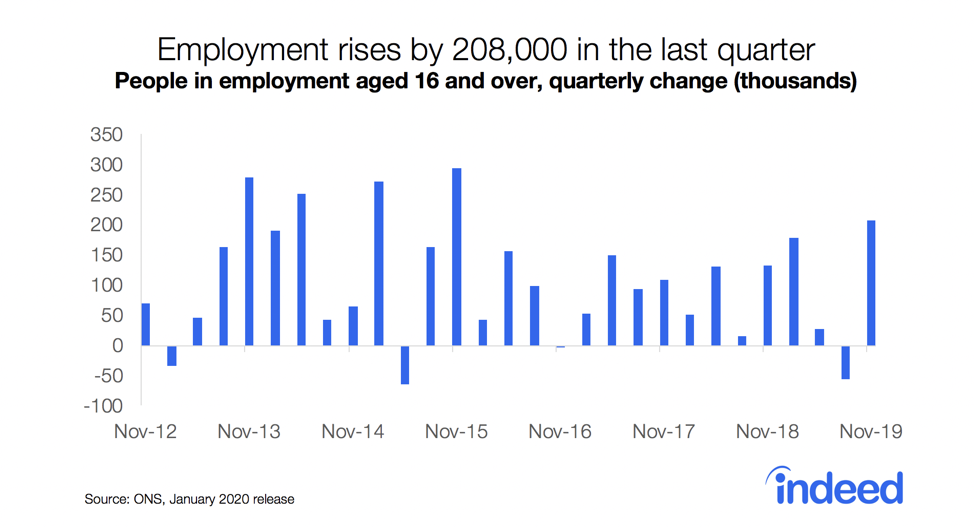Key Points
- Job postings on Indeed offering remote work options remain near their pandemic high despite the easing of public health restrictions.
- Postings describing jobs as temporarily remote were common during lockdowns, but have dropped to around one-third of remote work job ads.
- These trends suggest employers increasingly view remote work as a lasting phenomenon.
Job postings that offer remote work opportunities continue to account for a large proportion of all job ads on Indeed despite the recent ending of work-from-home guidance in England, the general easing of pandemic-related restrictions across the UK and government efforts to get workers back to offices. Some 11% of postings on Indeed’s UK website offered remote working options at the end of January, nearly four times more than the 2.9% that did so at the end of January 2019.
While high, this share is lower than the 35% of working adults surveyed by the ONS who worked remotely at least part of the week in the second half of January, when England’s Plan B measures were still mostly in force. One reason for this could be that job postings signal employers’ expectations about future work arrangements. Thus, job ads may serve as a measure of medium-term adoption of remote work rather than a reflection of ad-hoc arrangements adopted during the pandemic. In this way, posting language may be an indicator of the extent to which remote work has become institutionalized, even though some employers that offer it don’t mention it in job descriptions.
Job postings also provide a glimpse of how employers describe remote work arrangements to candidates. Since April 2020, employers who place jobs directly on Indeed have been asked an optional question: ‘Can this job be performed remotely, meaning primarily from home?’ Possible responses are ‘yes’, ‘temporarily due to Covid-19’ or ‘no’. Indeed adds the response to the job description.
During lockdowns, ‘temporarily remote due to Covid-19’ was more popular than ‘yes’, indicating that it was not generally viewed as a long-term arrangement. As many as 60% of postings for remote working positions were marked as temporarily remote during Lockdown 3 at the start of 2021. Fast forward to January 2022 and only 33% of remote postings were so marked.
A similar decline is evident within individual occupations. For example, the share of temporarily remote postings in software development fell from 52% to 26% during that period. Similar trends are evident in other high-remote occupations like mathematics and data science, and marketing.
To be sure, ‘temporarily remote’ job postings are still plentiful, suggesting some of the continued popularity of remote work is driven by uncertainty around the virus. But the elevated share of jobs ads offering permanently remote work might mean we are settling into a new work paradigm.
Employer enthusiasm for remote work may reflect not just beliefs about the productivity benefits of such arrangements, but also a desire to meet the wishes of employees. Searches for remote work on Indeed have been rising rapidly as a share of all searches. They remain at near-record levels, despite a dip last month, suggesting more UK jobseekers than ever want to work remotely. The share of searches that contain keywords related to remote work is nearly ten times greater than in 2019.
The job market is extremely tight and employers face intense competition for staff. Offering remote work when feasible makes sense. It can be a powerful way to grab the attention of candidates who value this flexibility. It can also let employers tap into underemployed demographic groups — such as people with caring responsibilities or priorities outside of work, like parents or older workers — who have higher unemployment or inactivity rates. Not surprising then that employers advertise remote work much more often than before the pandemic.
Methodology
This analysis of postings tagged as ‘temporarily remote’ is based on jobs employers post directly on Indeed in the UK. These postings represent a substantial share of all postings and are useful for understanding how employers advertise work-from-home roles. Postings are classified as remote if the employer posting a job directly on Indeed answered ‘yes’ or ‘temporarily due to Covid-19’ to the question: ‘Can this job be performed remotely, meaning primarily from home?’
The overall share of remote job postings on Indeed in the first chart also reflects postings from other sources, such as company career websites. These postings are classified as open to remote work if the job title or description includes terms like “remote work”, “telecommute”, “work from home”, or similar terms, or if the location is explicitly listed as remote.
Lockdown dates used in the charts are as follows: Lockdown 1 — 23 March 2020 (PM’s ‘you must stay at home’ speech) to 1 June 2020 (some schools reopen); Lockdown 2 — 5 November 2020 (second national lockdown comes into force in England) to 2 December 2020 (England returns to a three-tier system of restrictions); Lockdown 3 — 6 January 2021 (England enters its third national lockdown) to 8 March 2021 (restrictions start to lift in England).






